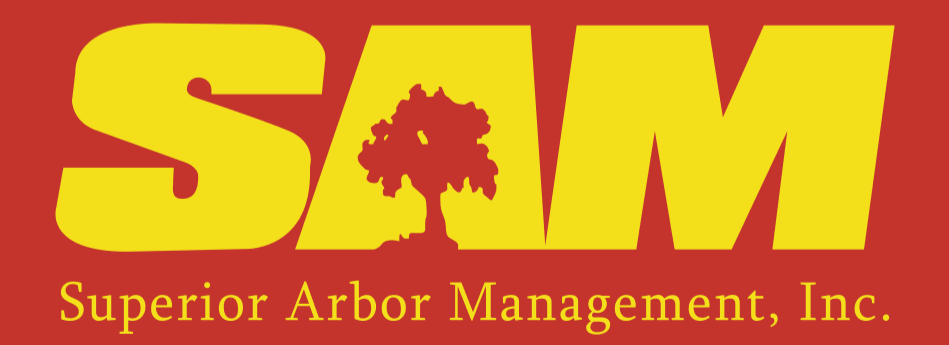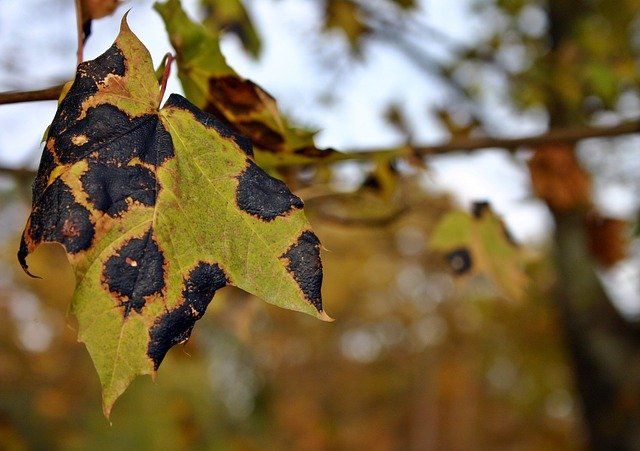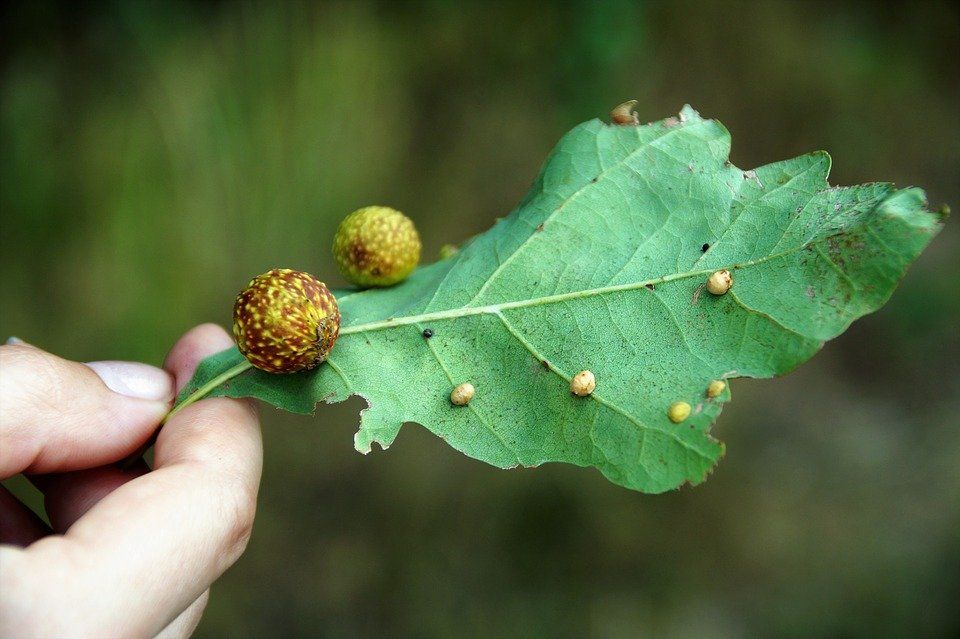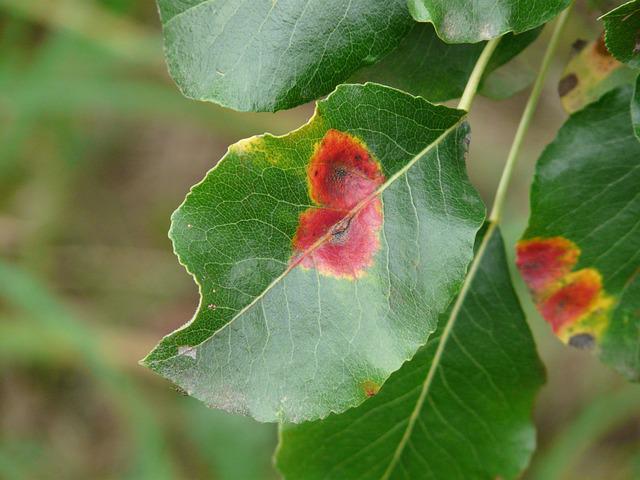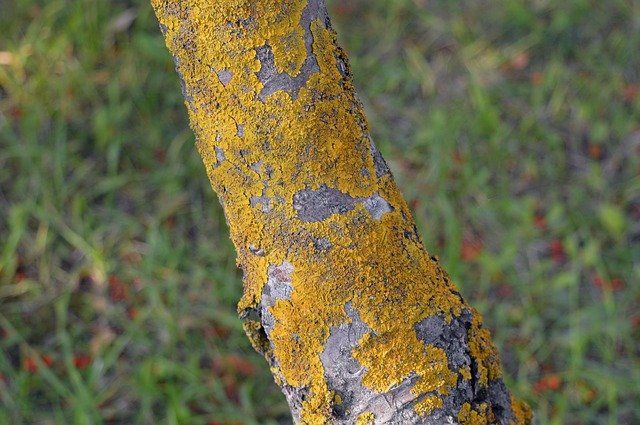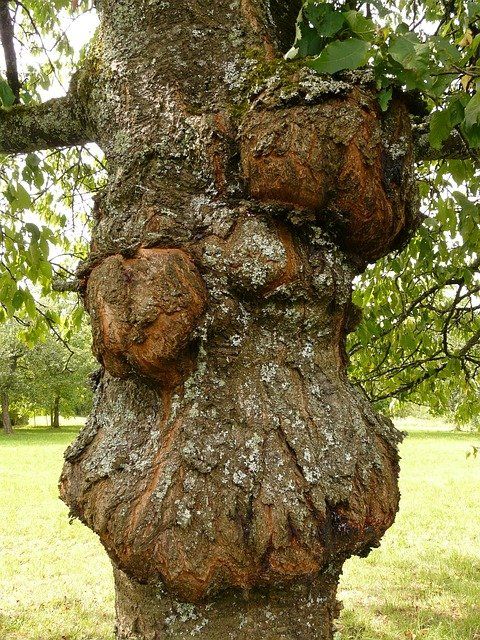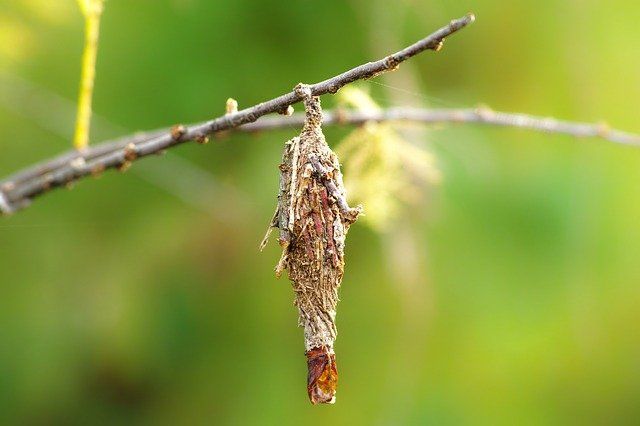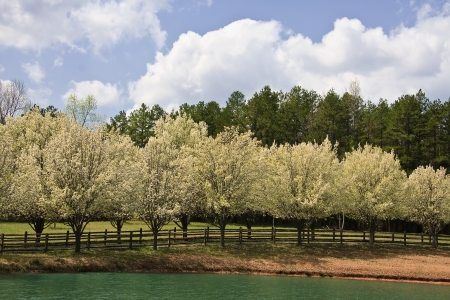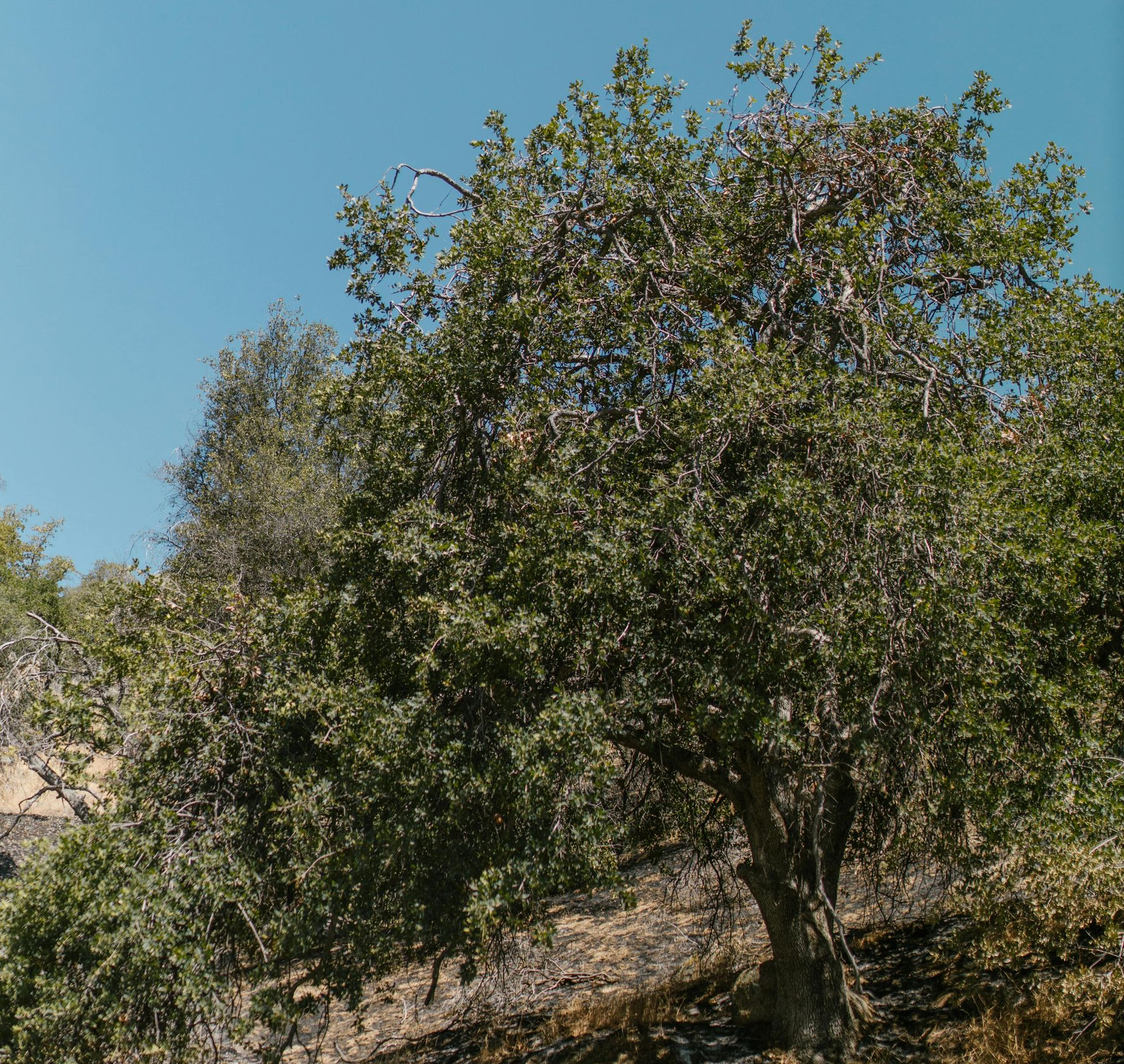Common Tree Disease Signs
The state of Georgia is home to a diverse array of tree species, from towering oaks to graceful pines and flowering dogwoods. While these trees provide beauty, shade, and ecological value, they can also fall victim to a variety of diseases due to the region's warm, humid climate. Recognizing the early signs of tree disease is crucial to preventing further damage and protecting your landscape.
Here are
32 signs that your tree may be diseased ranging from subtle to severe. These can include discolored or wilting leaves, early leaf drop, cankers, unusual growths, oozing sap, mushroom growth near the base, dead branches, and bark splitting. Some diseases can progress rapidly, so early detection is key.
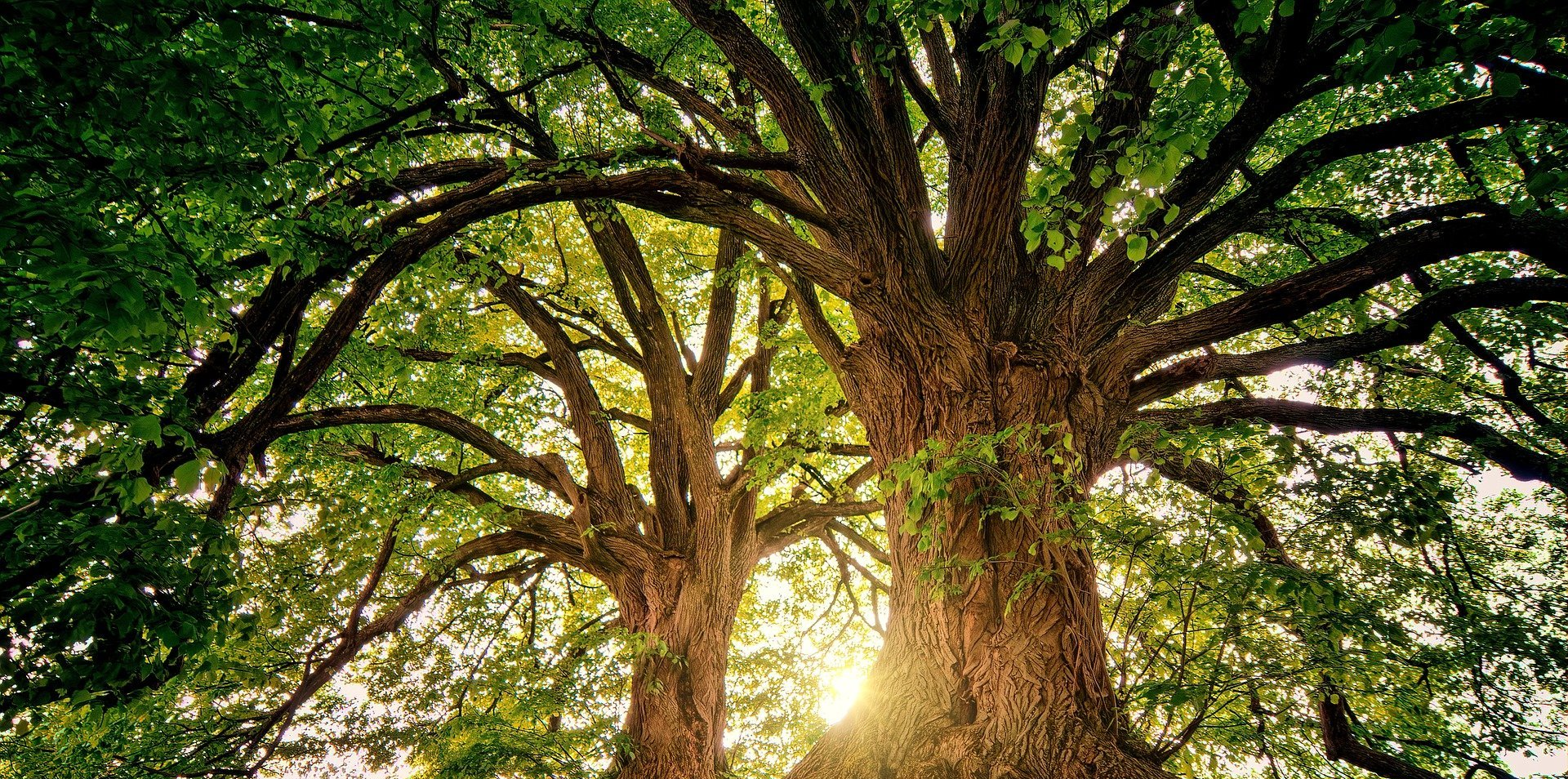
Dieback
Dieback occurs when parts of the tree die, usually from the top down. This can be a sign of disease or pests. This occurs normally due to drought, insects, root damage or fungus.
Leaf Scorch
Leaf scorch is a symptom of many different diseases, but is most commonly caused by drought. The leaves will turn brown and withered at the edges.
Wilting leaves
Wilted leaves may be a sign of insufficient water, pests, or disease. This happens when the tree is not able to take up water through its roots.
Bark splitting
Bark splitting can be a sign of many different diseases but is most commonly caused by canker. This happens when the tree's bark splits and oozes a sticky sap.
Gummy sap
Gummy sap on the branches or trunk of the tree is a sign of disease. The sap is usually a sign of aphids, a common pest.
Rust
Rust is a fungus that can infect many different types of trees. The leaves will turn yellow and red and may drop prematurely.
Foliage discoloration
Foliage discoloration can be a sign of many different diseases but is most commonly caused by bacteria or fungus. The leaves may turn yellow, red, or brown.
Swelling of branches
Swelling of the branches can be a sign of many different diseases but is most commonly caused by canker or blight.
Cankers
sunken, discolored areas on the bark that are often wet, and oozing canker is caused by various fungi or bacteria and is often associated with dieback.
Honeydew
A sticky, sweet substance that coats leaves and stems is a sign of honeydew, which is excreted by aphids or other sap-sucking insects.
Galls
Swollen, lumpy areas on leaves or stems that are often green, red, or black are galls, which are caused by mites, insects, or fungi.
Bark lesions
Dark spots or lesions on the bark can be a sign of bark diseases. These lesions can be caused by various fungi, bacteria, or pests.
Drought stress
One of the most common problems that trees face is drought stress. This can be a sign of many different diseases but is most commonly caused by a lack of water.
Root rot
Root rot is a serious problem that can kill a tree. It is caused by various fungi and bacteria that attack the tree's roots.
Verticillium wilt
Verticillium wilt is a fungus that can infect many different types of trees. The leaves will turn yellow and wilt and may drop prematurely.
Elm yellows
Elm yellows is a virus that can infect elm trees. The leaves will turn yellow, and the tree may die.
Anthracnose
Anthracnose is a fungus that can infect many different types of trees. The leaves will turn yellow and brown and may drop prematurely.
Apple scab
Apple scab is a fungus that can infect apple trees. The leaves will turn brown, and the fruit may be covered in spots.
Powdery mildew
Powdery mildew is a fungus that can infect many different types of trees. The leaves will turn yellow, and the tree may be covered in a powdery white substance.
Botrytis blight
Botrytis blight is a fungus that can infect many different types of trees. The leaves will turn brown, and the tree may be covered in a grayish-white fuzz.
Maple decline
Maple decline is a problem that can affect maple trees. The leaves will turn yellow, and the tree may die.
Fire blight
Fire blight is a bacterial disease that can infect many different types of trees. The leaves will turn black and the tree may die.
Crown gall
Crown gall is a bacterial disease that can infect many different types of trees. The leaves will turn brown, and the tree may die.
Elm leaf beetle
Elm leaf beetle is a beetle that can infest elm trees. The leaves will turn brown, and the tree may die.
Gypsy moth
Gypsy moth is a moth that can infest trees. The leaves will turn brown, and the tree may die.
Japanese beetle
Japanese beetle is a beetle that can infest trees. The leaves will turn brown, and the tree may die.
Bagworm
Bagworm is a moth that can infest trees. The leaves will turn brown, and the tree may die.
Scales
Scales are insects that can infest trees. The leaves will turn brown, and the tree may die.
Aphids
Aphids are insects that can infest trees. The leaves will turn yellow, and the tree may die.
Thrips
Thrips are insects that can infest trees. The leaves will turn yellow, and the tree may die.
Whitefly
The Whitefly is an insect that can infest trees. The leaves will turn yellow, and the tree may die.
Tent caterpillar
The Tent Caterpillar is a moth that can infest trees. The leaves will turn brown, and the tree may die.
Advanced stages of disease
If you notice anything unusual or concerning about the health of your trees, don't wait—contact a certified arborist. A professional can diagnose the problem and recommend appropriate treatment options to help restore your tree’s health or safely remove it if necessary.
The health of a tree is very important and can be affected by many different things. If you notice any of the signs of disease listed in this article, it is important to take action and get your tree treated. Failure to do so could result in the death of your tree.
Superior Arbor Management is a
tree care company that specializes in the diagnosis and treatment of diseases in trees. Our certified arborist, Tim Costley, has the knowledge and experience to properly treat any disease your tree may be suffering from.
Contact us today for a free consultation!
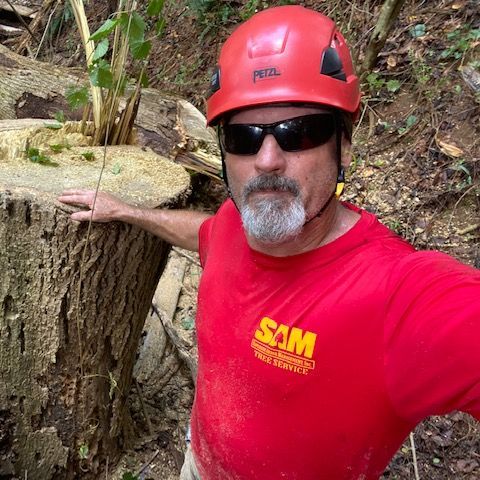
Tim Costley
Tim Costley is the President of Superior Arbor Management, Inc. He has achieved the ISA Arborist Certification to provide the best possible tree care for S.A.M.’s customers.
*ISA Certified Arborist #SO-1925A
*ISA Tree Risk Assessment Qualification (TRAQ)
*ASCA (American Society of Consulting Arborist) Member
